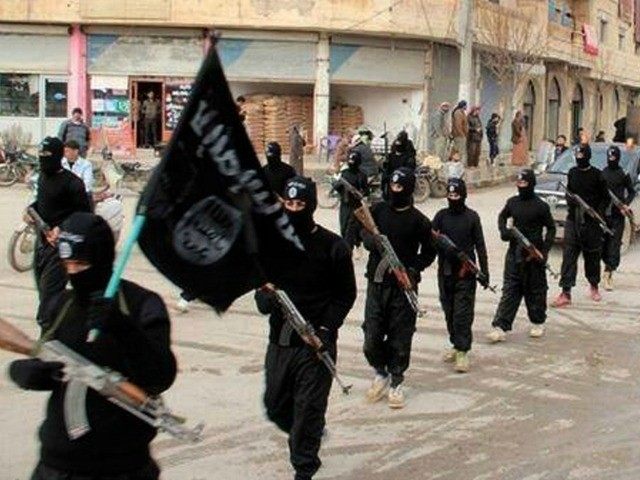The Islamic State (ISIS/ISIL/IS) is expanding its terrorist activities and getting stronger in the Afghanistan-Pakistan region as it loses fighters and territory in the Middle East, reports Voice of America (VOA), citing Afghan officials and analysts.
“As [ISIS] has found itself increasingly on the defensive in the Middle East, it seems to be looking for new areas to carve out a presence,” Michael Kugelman, an analyst at the Wilson Center, a global policy research group, told VOA. “The Afghanistan-Pakistan region, where it already has a light footprint, appears to be one of the targets.”
VOA’s report comes less than a month after American Gen. John Nicholson, the top commander of U.S. and NATO troops in Afghanistan, warned that the Afghanistan-Pakistan region’s ISIS branch, known as the Khorasan Province (IS-KP/ISIL-K), is seeking to establish its own Caliphate on Afghan soil.
Eastern Afghanistan’s Nangarhar province, which borders Pakistan, has been identified as ISIL-K’s stronghold.
In Nangarhar, VOA has learned that the Islamic State has been using mosques as military centers.
“IS has turned at least 60 mosques in five districts of Nangarhar into military training centers,” Abdul Zahir Haqqani, director of religious affairs in Nangarhar, told VOA, noting that “the imams have fled to Jalalabad, Nangarhar’s capital city.”
VOA adds that ISIL-K in Nangarhar has also “launched multiple attacks on Afghan police checkposts and villages in recent months, it has imposed taxes on agriculture activities in areas it controls, and it has been cutting down trees in some parts of the province in a timber-smuggling operation to neighboring Pakistan.”
The Sunni jihadist group is reportedly operating in the Afghan provinces of Zabul, Ghazni, Kunar, and Nuristan, reported Khaama Press (KP) earlier this year.
Except for Ghazni, the provinces lie on Afghanistan’s border with Pakistan. Ghazni is located near the Pakistan border, next to Zabul.
ISIL-K “is getting stronger and, in some areas, has taken over rival Taliban positions,” VOA learned from Bismillah Afghanmal, the governor of Zabul.
“In some areas [Taliban] white flags have been replaced by [ISIS] black flags. … This is a major threat and we have shared our concerns with the central government,” the provincial governor told Radio Free Europe/Radio Liberty (RFE/RL), according to VOA.
The Khorasan Province has established military bases in at least four districts in Zabul, the head of the provincial council there reportedly revealed.
In Ghazni, ISIL-K has been actively recruiting in at least three districts.
“The situation in these areas is worrisome. … Fighters from Uzbekistan have settled along with their families in some remote mountainous areas and have been trying to recruit locals into their ranks,” Khaleqdad Akbari, head of the Ghazni provincial council, told VOA.
Most of the ISIL-K fighters are former members of the Pakistan Taliban, Tehrik-e Taliban Pakistan (TTP), Gen. Nicholson has said, adding Uzbeks from the Islamic Movement of Uzbekistan have also joined the jihadist group.
ISIL-K has also been increasing its terrorists activities in Pakistan, Sen. Rehman Malik, the former interior minister in Pakistan, told VOA.
Citing unnamed Pakistani officials, VOA reports that “hundreds of IS operatives from different cities” have been detained in Pakistan “within the past two years,” adding that Islamabad insists the terrorist group “has no organized presence in Pakistan.”
Gen. Nicholson has acknowledged that the Afghanistan-Pakistan region is a fertile ground for terrorism, noting in September that “of the 98 U.S. or UN-designated terrorists organizations around the globe, 20 of them are in the Af-Pak region.”
“This is the highest concentration of the numbers of different groups in any area in the world,” he added.
The Islamic State established its Khorasan Province in January 2015, less than a month after President Barack Obama declared an end to the U.S. combat mission in Afghanistan, a move that placed the ineffective Afghan National Defense and Security Forces (ANDSF) in the lead of security operations.
Khorasan is an ancient name for a territory that covers Afghanistan, Pakistan, as well as some parts of Iran, India, and other neighboring countries. ISIL-K reportedly receives its orders from the core Islamic State group in Iraq and Syria.
In October, Brig. Gen. Charles Cleveland, a Kabul-based spokesman for the U.S.-NATO mission in Afghanistan, told Pentagon reporters that efforts by the U.S.-backed ANDSF had reduced the number of ISIL-K jihadists in Afghanistan by “15 to 20 percent” to about 1,000 fighters.

COMMENTS
Please let us know if you're having issues with commenting.